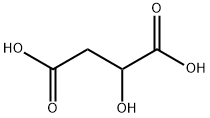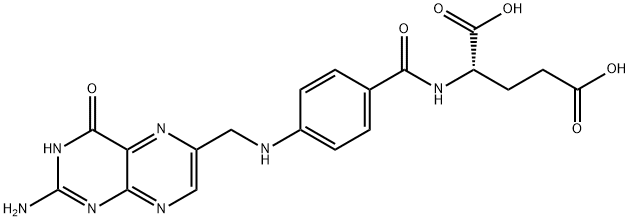DL-Malic acid , AR,>99.0%(T) , 6915-15-7
Synonym(s):
(±)-2-Hydroxysuccinic acid;DL -Hydroxybutanedioic acid;DL -Malic acid
CAS NO.:6915-15-7
Empirical Formula: C4H6O5
Molecular Weight: 134.09
MDL number: MFCD00064212
EINECS: 230-022-8
| Pack Size | Price | Stock | Quantity |
| 100G | RMB26.40 | In Stock |
|
| 500G | RMB47.20 | In Stock |
|
| 2.5KG | RMB189.60 | In Stock |
|
| others | Enquire |
PRODUCT Properties
| Melting point: | 131-133 °C (lit.) |
| Boiling point: | 167.16°C (rough estimate) |
| alpha | [α]D20 -0.5~+0.5° (c=5, H2O) |
| Density | 1.609 |
| bulk density | 800kg/m3 |
| vapor density | 4.6 (vs air) |
| vapor pressure | <0.1 mm Hg ( 20 °C) |
| refractive index | 1.3920 (estimate) |
| Flash point: | 203 °C |
| storage temp. | 2-8°C |
| solubility | methanol: 0.1 g/mL, clear, colorless |
| pka | 3.4(at 25℃) |
| form | Solid |
| color | White to Almost white |
| Odor | at 100.00 %. odorless |
| PH | 3.33(1 mM solution);2.74(10 mM solution);2.21(100 mM solution); |
| Odor Type | odorless |
| optical activity | [α]/D 0.10 to +0.10° |
| biological source | synthetic |
| Water Solubility | 558 g/L (20 ºC) |
| Merck | 14,5707 |
| BRN | 1723539 |
| LogP | -6.14 at 20℃ |
| CAS DataBase Reference | 6915-15-7(CAS DataBase Reference) |
| NIST Chemistry Reference | Hydroxybutanedioic acid(6915-15-7) |
| EPA Substance Registry System | Malic acid (6915-15-7) |
Description and Uses
Malic Acid is an acidulant that is the predominant acid in apples. it exists as white crystalline powder or granules and is considered hygroscopic. as compared to citric acid, it is slightly less soluble but is still readily soluble in water with a solubility of 132 g/100 ml at 20°c. it has a stronger apparent acid taste and has a longer taste retention than citric acid which peaks faster but does not mask the aftertaste as effectively. a quantity of 0.362–0.408 kg of malic acid is equivalent to 0.453 kg of citric acid and to 0.272–0.317 kg of fumaric acid in tartness. at temperatures above 150°c it begins to lose water very slowly to yield fumaric acid. it is used in soft drinks, dry-mix beverages, puddings, jellies, and fruit filling. it is used in hard can- dies because it has a lower melting point (129°c) than citric acid which improves the ease of incorporation.
Safety
| Symbol(GHS) |  GHS07 |
| Signal word | Warning |
| Hazard statements | H319 |
| Precautionary statements | P264-P280-P305+P351+P338-P337+P313 |
| Hazard Codes | Xn,Xi |
| Risk Statements | 22-37/38-41-36/37/38-42/43-34 |
| Safety Statements | 26-39-37/39-36-36/39 |
| WGK Germany | 1 |
| RTECS | ON7175000 |
| Autoignition Temperature | 644 °F |
| TSCA | Yes |
| HS Code | 29181980 |
| Hazardous Substances Data | 6915-15-7(Hazardous Substances Data) |
| Toxicity | LD50 orally in Rabbit: > 3200 mg/kg |


